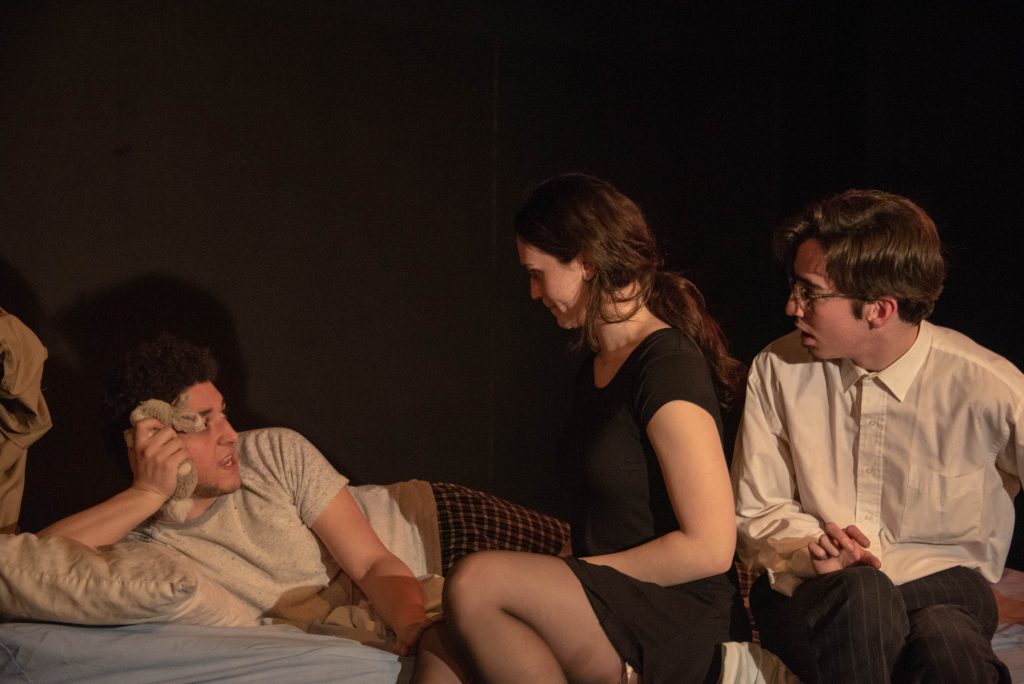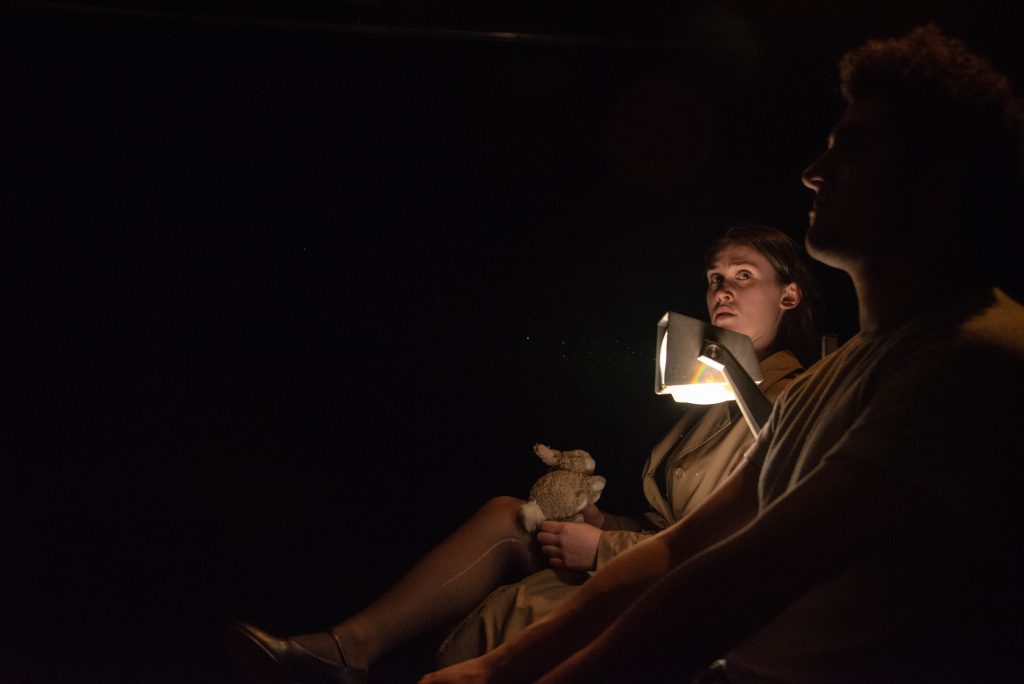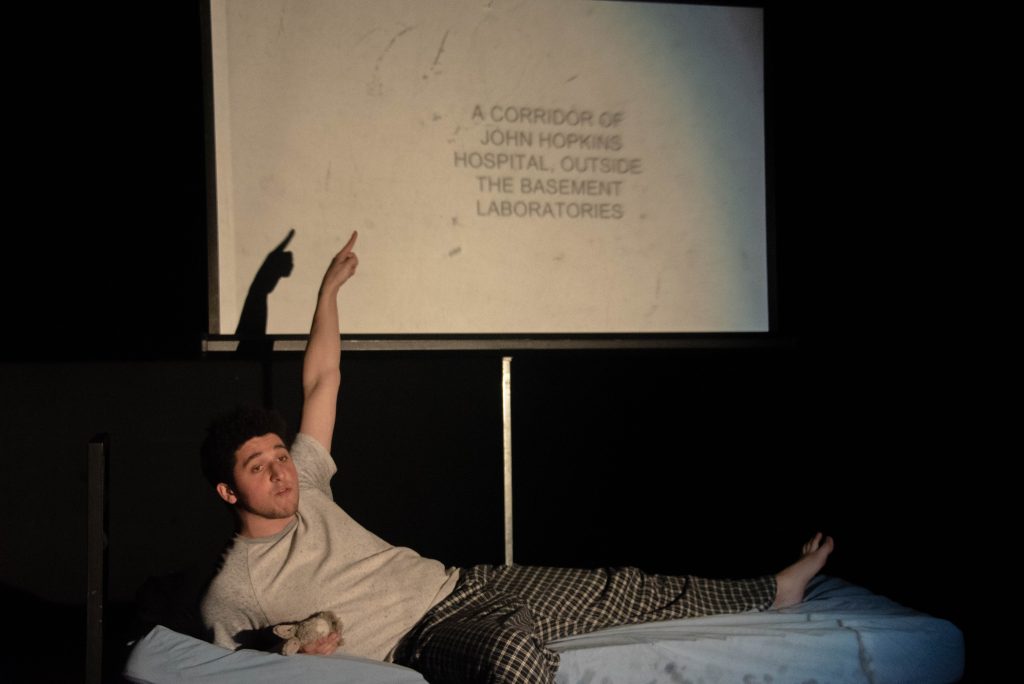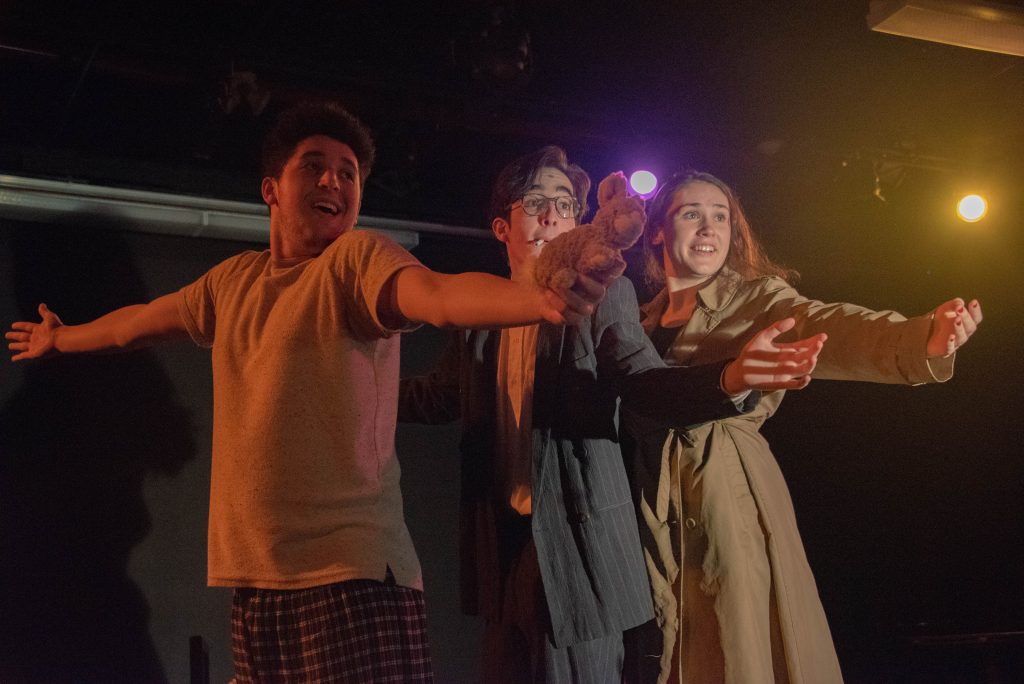
Photo by Max Lowe ’19
by Megan Muratore
Walking into Studio A, we see a sparsely decorated set (a bed in the center of the room, a table and chair stage right), seating for the audience set up along three of the four walls of the room (with aisles for the actors to walk through), and an old-fashioned projector, with its light serving as a spotlight in the center of the stage. While the actors move all throughout the space over the course of the show, the bed, desk, and projector stay in the same place as a reminder of the reality in which they exist.
Paula Vogel’s The Baltimore Waltz, directed here by Sarah Marlin (’20), is a study of neon-tinted escapism taking place in Baltimore, Maryland and dreamscapes of Germany, France, and Holland. After single elementary school teacher Anna (Izzy Maher ’22) is diagnosed with the mysterious and fatal ATD (Acquired Toilet Disease), she and her brother Carl (Ethan Embry ’19), a children’s librarian, embark on the European adventure of their dreams. What becomes clear throughout the play, however, is that the events appearing on the stage are not necessarily those occurring in the Anna and Carl’s reality.

Photo by Max Lowe ’19
While the play is satirical on the surface, the plot is embedded with reminders of the tragedy of the AIDS crisis of the ’80s and ’90s. Anna, Carl, and the ever-changing character of the Third Man (Matt Clyne ’20), illuminate how the disease affects its victims and the people around them. And while maintaining a playful tone throughout, the play also makes allusions to recent U.S. history, specifically the U.S. government’s unwillingness to prioritize the disease due to its association with gay men and drug addicts, and pharmaceutical companies’ profiting off of the deaths of people with the disease.
At the outset of the play, Carl is leading a reading hour for a group of children at the library he works at, before revealing that he has been given a pink slip because he wears a pink triangle (a reference to the insignia assigned to queer individuals during the Holocaust). This, along with the the parallel of ATD to AIDS, serves as an early indicator that Anna’s sickness is a fantasy she projects in order to deal with the idea of losing her brother.

Photo by Max Lowe ’19
After the diagnosis, she and Carl embark on a European journey expressed in quick-paced dreamlike episodes, interspersed with direct address monologues or lessons in German and French. Lighting designed by Miranda Coble ’19, the imagined European scenes are lit with washes of neon, as opposed to the stark, bright lighting in the early scenes and Carl/Anna’s hospital room. This color palette conveys the playful, childlike excitement Anna and Carl have in their European escapades, and enhances the delineation between the imagined vacation and the reality of Carl’s sickness and eventual death.
While Carl gets to enjoy Europe to its full extent, Anna is bound to the six stages of patients dealing with death (isolation and denial, anger, bargaining, depression, acceptance, and hope), which also serve as an indication of her grieving for her brother. However, Anna and the Third Man are dressed in regular clothes and shoes, while Carl is shoeless and in pajamas throughout the entire play. We get to see Carl interacting in an imagined world in which he is not bound to his disease, yet are constantly reminded of the reality of his situation due to his clothing.

Photo by Max Lowe ’19
By the end of the play it becomes clear to the audience that Carl has passed away, the Third Man was a representation of medical professionals, and the European vignettes were imagined by Anna as part of her grieving process. In light of the reality of the situation, the play is imbued with sadness and mourning, yet the powerful performances, direction, and text still allow for delight in the relationship between the siblings, and the vacation that could have been.
PHOTO GALLERY
PRODUCTION CREDITS
Written by: Paula Vogel
Director: Sarah Marlin ’20
Stage Manager: Eliza Martin ’21
Lighting Design: Miranda Coble ’19
Cast: Matt Clyne ’20, Ethan Embry ’19, Izzy Maher ’22
***
Megan Muratore is a Senior staff writer for STLN
















